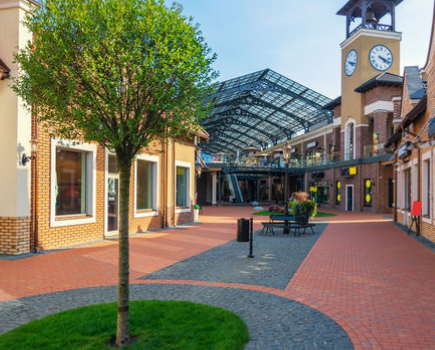
Open-air retail centers have proven their resilience in the face of growing e-commerce, defying early predictions that digital shopping would render them obsolete. In fact, these centers are becoming more essential as they adapt to meet evolving consumer needs. Retailers are utilizing open-air strip centers as fulfillment hubs, pickup and return locations, and experiential showrooms—effectively combining the convenience of online shopping with the necessity of physical interaction. These transformations present new opportunities for commercial real estate (CRE) investors.
Open-Air Retail Centers as Fulfillment Hubs
Many retailers are turning their retail spaces into micro-fulfillment centers to streamline both in-store and online order fulfillment, improving delivery efficiency and meeting consumer expectations for fast shipping.
- CVS Health is automating its distribution network and converting stores into fulfillment hubs to speed up product flow.
- Advance Auto Parts is centralizing its distribution to create larger regional hubs and improve product availability.
- Best Buy is testing smaller store formats that also serve as fulfillment centers, offering quick pickups and localized shipping.
- Target fulfills over 95% of its online orders directly from stores, continuing to invest in in-store fulfillment for improved delivery speed.
Why This Matters for CRE Investors:
Open-air retail centers that accommodate in-store fulfillment models are attracting strong tenants, leading to higher occupancy and more stable rental income. Investors owning properties in high-density areas can expect growing demand from retailers seeking to shorten delivery times and enhance operational efficiency.
Omnichannel Retailers and the Importance of Physical Stores
While e-commerce remains dominant, many online brands are recognizing the need for physical locations. This hybrid approach blends the convenience of online shopping with the engagement of brick-and-mortar stores.
- Amazon Fresh integrates e-commerce technology into physical grocery stores, allowing for innovations like “Just Walk Out” checkout and Alexa-powered shopping lists.
- Other online-first brands like Warby Parker and Allbirds are opening stores to complement their online businesses, offering in-person shopping alongside their digital presence.
- Buy Online, Pick Up In-Store (BOPIS) is increasingly popular, and open-air retail centers play a significant role in this growing trend.
Why This Matters for CRE Investors:
E-commerce brands are not abandoning physical retail; rather, they’re strategically investing in it. For example, Amazon Fresh has opened stores in high-traffic locations, which further drives demand for open-air retail space. CRE investors with well-positioned strip centers can benefit from this trend, as online-first brands continue to open physical storefronts.
The Role of Open-Air Retail Centers in Handling Online Returns and Exchanges
Post-purchase services like order pickups, exchanges, and returns are a major part of the retail process. Many consumers prefer the convenience of handling these services in person, and open-air retail centers are playing an essential role in this.
- Kohl’s allows customers to return Amazon orders at its open-air locations, driving foot traffic without requiring packaging or labels.
- Ulta Beauty enables customers to pick up online orders in-store (BOPIS) or exchange products without waiting for shipping.
- Petco offers easy in-store exchanges for pet supplies purchased online.
- Dick’s Sporting Goods and Old Navy provide return services in-store, avoiding the hassle of mailing returns.
Why This Matters for CRE Investors:
In-person returns increase foot traffic, benefiting retailers and boosting overall traffic to retail centers. As more brands expand their BOPIS (Buy Online, Pick Up In-Store) and BORIS (Buy Online, Return In-Store) options, well-situated open-air retail centers will attract long-term tenants and stable leases, ensuring consistent rental income.
Open-Air Retail Centers as Showrooms for E-Commerce Brands
Online-first retailers are increasingly using open-air retail centers as showrooms, where customers can see and test products before purchasing them online. Instead of occupying large department stores, brands are opting for retail strip centers to create cost-effective showrooms.
- Bonobos, Casper, and Warby Parker use showroom-style spaces where customers try products in-store but complete purchases online.
- High-end brands in electronics, furniture, and apparel are following suit, using retail strip centers as a lower-cost alternative to malls.
Retailers save on inventory costs by displaying minimal stock on-site, while still offering an in-person shopping experience for customers.
Why This Matters for CRE Investors:
Open-air retail centers are becoming an attractive option for e-commerce brands seeking to engage customers in person while keeping operational costs low. This shift can drive demand for retail space in well-located strip centers.
Final Thoughts
Open-air retail centers are evolving to meet the demands of the e-commerce age, offering fulfillment hubs, return services, and showrooms while continuing to attract both traditional retailers and online-first brands. For CRE investors, these transformations create new opportunities in a rapidly changing retail landscape.









